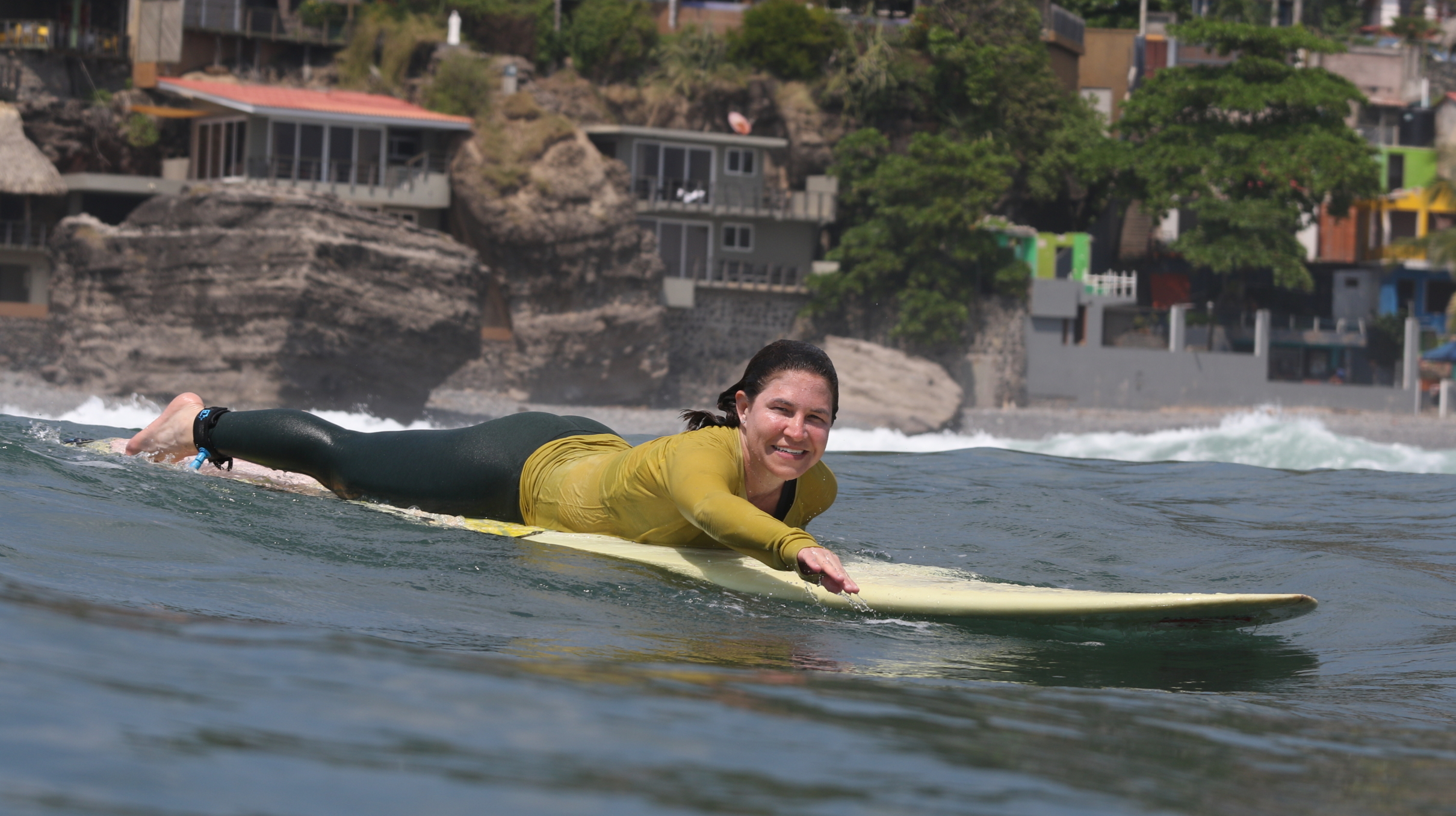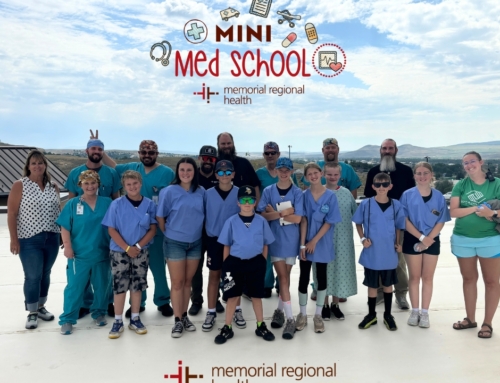Dr. Laurie Good catches some waves while prioritizing the safety of her skin from the sun’s UV rays, of course!
Preventative Skin Care at High Altitudes
Dermatologist Dr. Laurie Good shares her tips for taking care of your skin while living in the Colorado mountains
If you’re interested in hearing more from our amazing providers here at MRH, sign up for our digital newsletter of Living Well here.
By Dr. Laurie Good, Board-Certified Dermatologist at MRH
As Ben Franklin once said, an ounce of prevention is worth a pound of cure. This rings especially true in dermatology. I’d like to take a minute to discuss some tried and true, as well as some newer, novel preventative tools in our skincare toolbox for the treatment of precancerous lesions.

Dr. Laurie Good, board-certified dermatologist
If you’ve ever noticed the pink, rough, scaly spots that bedazzle the faces of your sun-loving, outdoorsy friends and family over 40 years old, you might be recognizing precancerous changes that occur after decades of sun (UV) damage at high altitude. I am referring to growths called actinic keratosis (AK), one of the most common conditions we treat in the dermatology clinic.
So, what do we mean by “precancerous?
An AK has the potential to become a squamous cell carcinoma (SCC). SCC is a type of skin cancer that can become invasive, require extensive surgeries and can even result in metastatic disease and death, if left untreated.
“Precancerous” refers to the 1% per lesion per year risk of an actinic keratosis turning into a squamous cell carcinoma. That translates roughly to a 17% lifetime risk for an individual lesion, but the problem is that many people don’t just have a solitary lesion, so the risk is much higher.
So, what can be done to prevent actinic keratoses from developing?
This is where sunscreen, protective clothing, hats and avoiding midday sun comes in. But most of my patients are already taking these measures — so what more can be done?
You might have heard of an “oral sunscreen,” an all-natural, plant-based, antioxidant extract that reduces the damage of UV exposure. It is called polypodium leucotomas, branded as Fernblock®. It is a backup measure of defense, one that should be utilized in addition to topical sun protection measures.
Taking this orally before sun exposure can reduce the damage done to your skin cells’ DNA and the product can be found at your pharmacy store.
What if you already have many actinic keratoses (AKs)?
We have a variety of treatment modalities meant to reduce the number of AKs and clear zones of damaged skin. We use things like liquid nitrogen to destroy individual lesions and field treatments such as the “chemo cream” to get rid of broader areas of precancerous damage.
Because we live in a place where most people are active year-round, we prefer utilizing field treatments in the winter when the sun is weaker and the air is cooler. You can even go skiing while using the chemo cream.
It is also important to stay on track with skin exams, as detecting skin cancer early can be lifesaving.
What if you have already made a squamous cell carcinoma?
In this case, I often put patients on a supplement called niacinamide or nicotinamide. These are non-flushing forms of vitamin B3, which have been proven in large-scale, well-designed studies to reduce the development of squamous cell carcinomas by about 33%. This is an over-the-counter product and the recommended dose for this purpose is 500mg by mouth twice daily.
Overall, prevention is the best medicine. Most of us live in Colorado to pursue an active life in the outdoors. I encourage my patients to enjoy their outdoor passions but to do it as wisely as possible, utilize all preventative measures and come for frequent skin exams so we can take early action against damage already done.
Dermatology at MRH
Memorial Regional Health offers dermatology services in Craig and Steamboat, thanks to board-certified dermatologist Dr. Laurie Good and her team. Full-spectrum skincare for patients of all ages, including children, is offered, including treatment for common skin conditions such as:
- Acne
- Eczema
- Fungal infections
- Moles
- Rashes
- Skin cancers
- Warts
- Wrinkles
- And more!
For more information on services provided or to schedule an appointment, call 970-826-8080 or learn more here.
Overview of Actinic Keratosis
Actinic keratosis (AK) is one of the most common precancers that develops on damaged skin from chronic exposure to UV rays, often from the sun and/or indoor tanning. AKs can put you at higher risk for skin cancer and can develop into squamous cell carcinoma (SCC).
Here’s what you should know about the common precancer:
- About 58 million Americans have one or more AKs.
- Risk factors include history of unprotected exposure, geographic location close to the equator, weakened immune system, fair skin and being older than 40 years old.
- AKs often present as dry and rough to the touch or raw, sensitive and painful. Some look and feel inflamed.
- Treatment depends on how many lesions you have, where they are located and your overall age and health. Options range from topical treatments to surgical procedures.
Source: Skin Cancer Foundation






